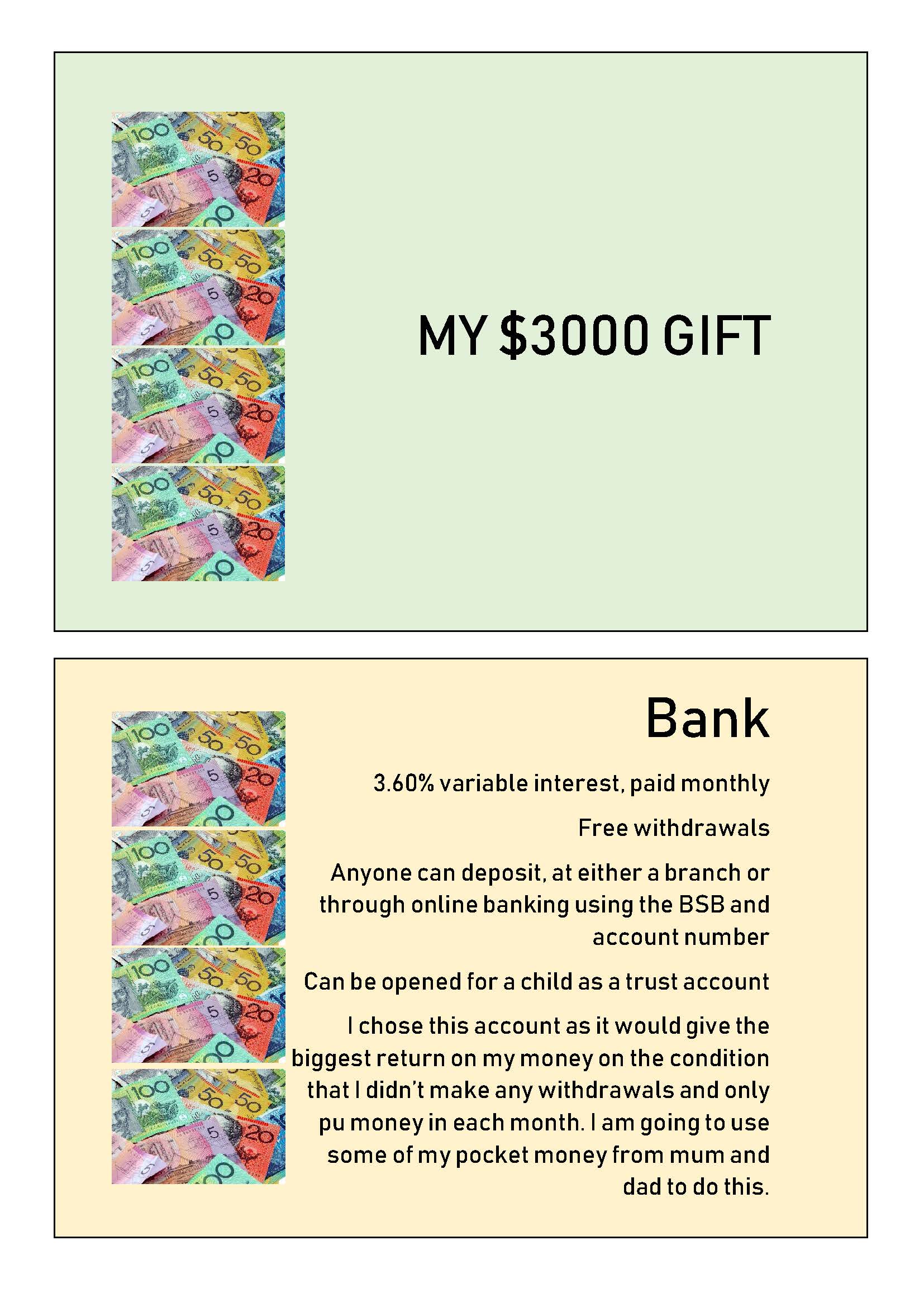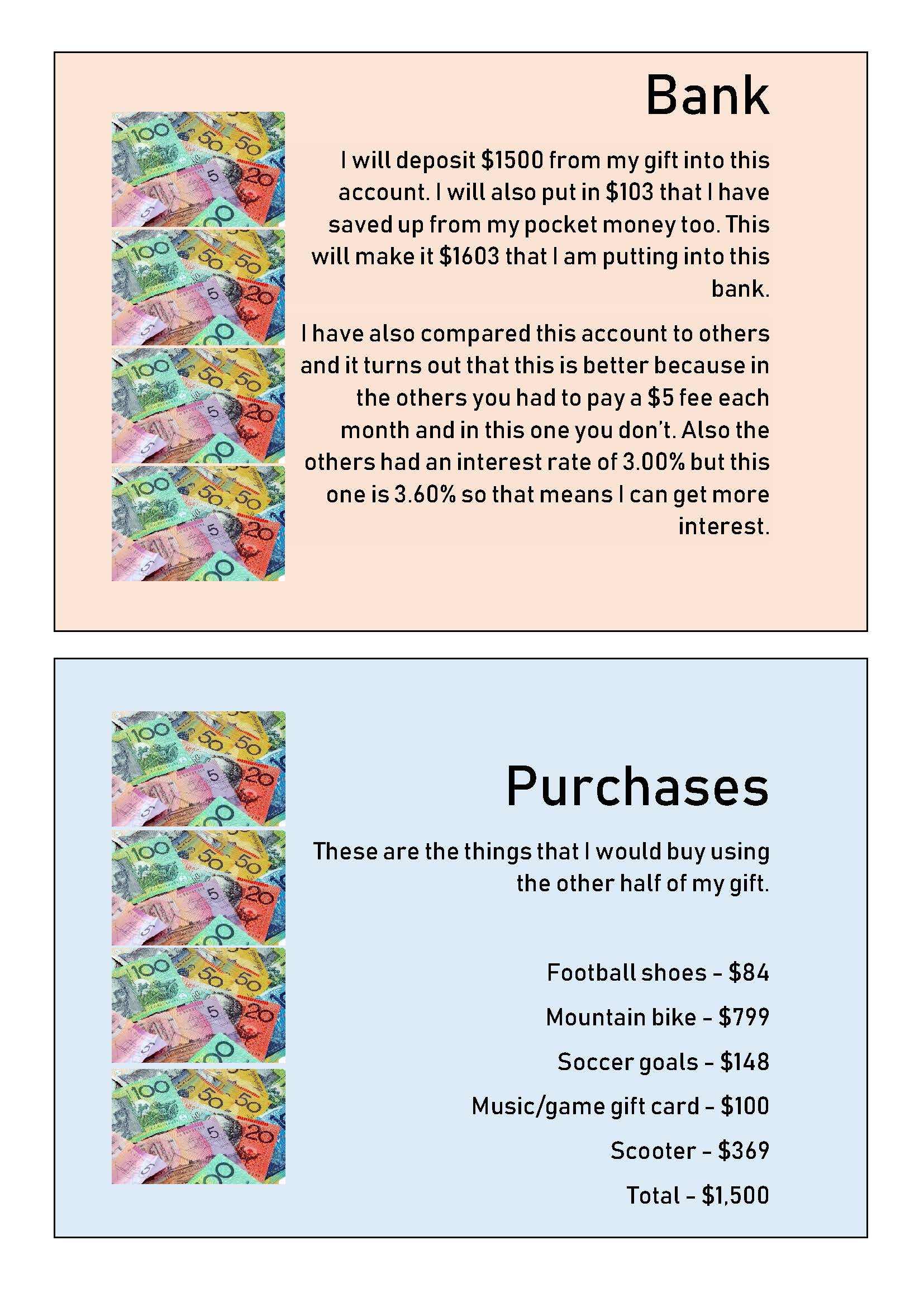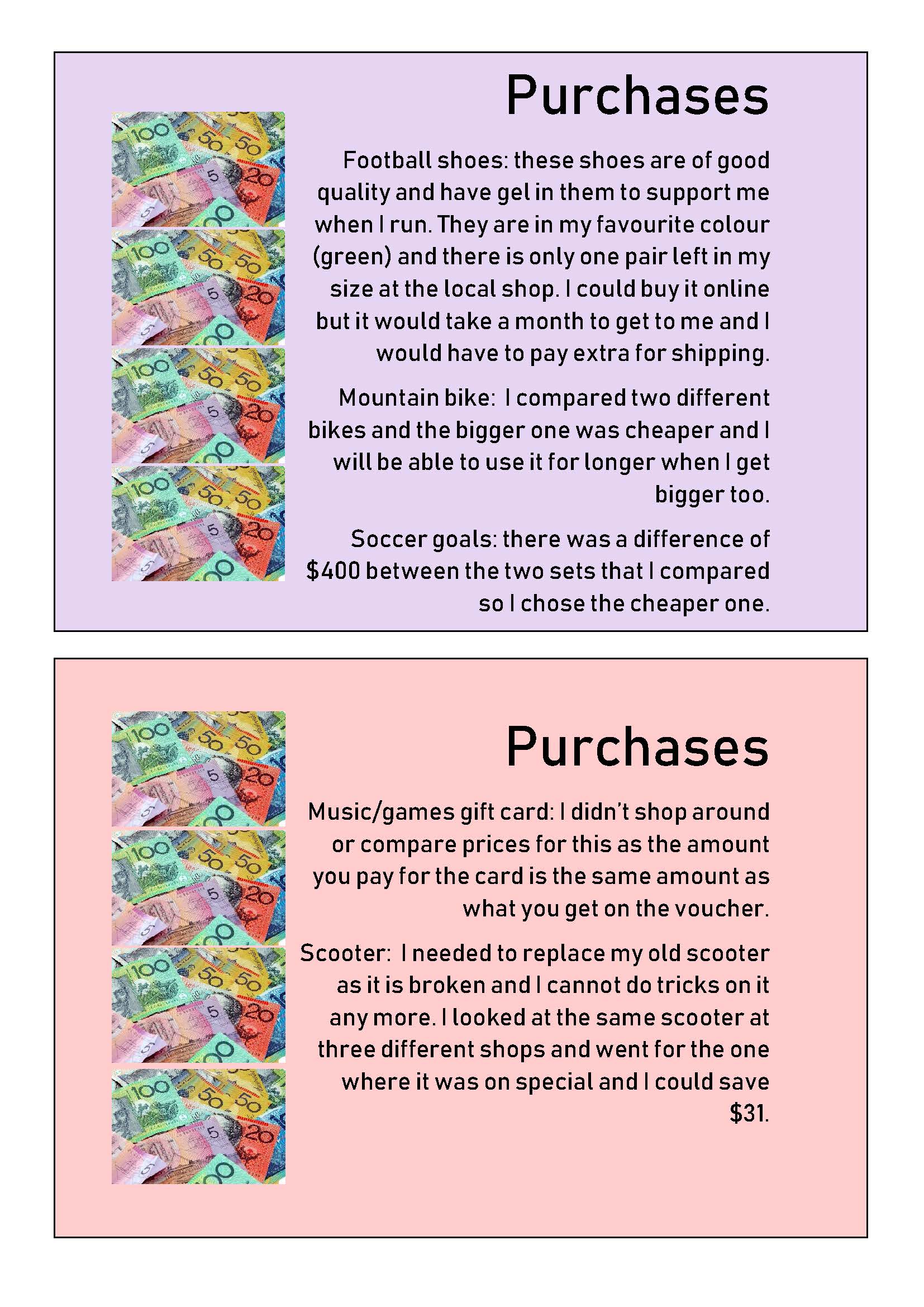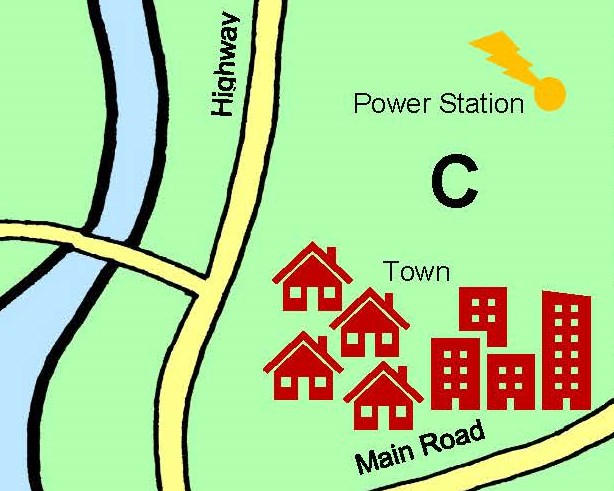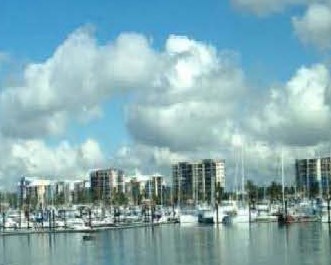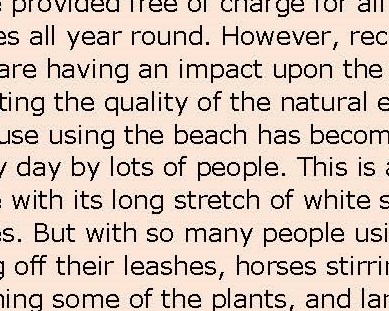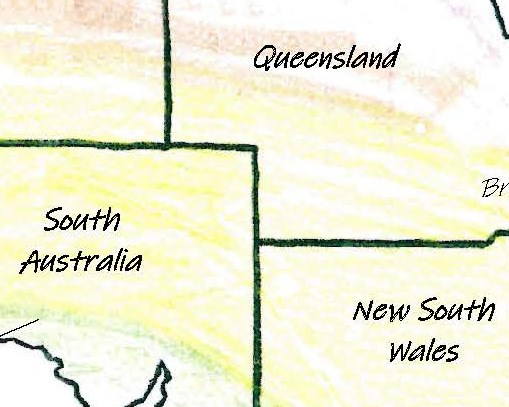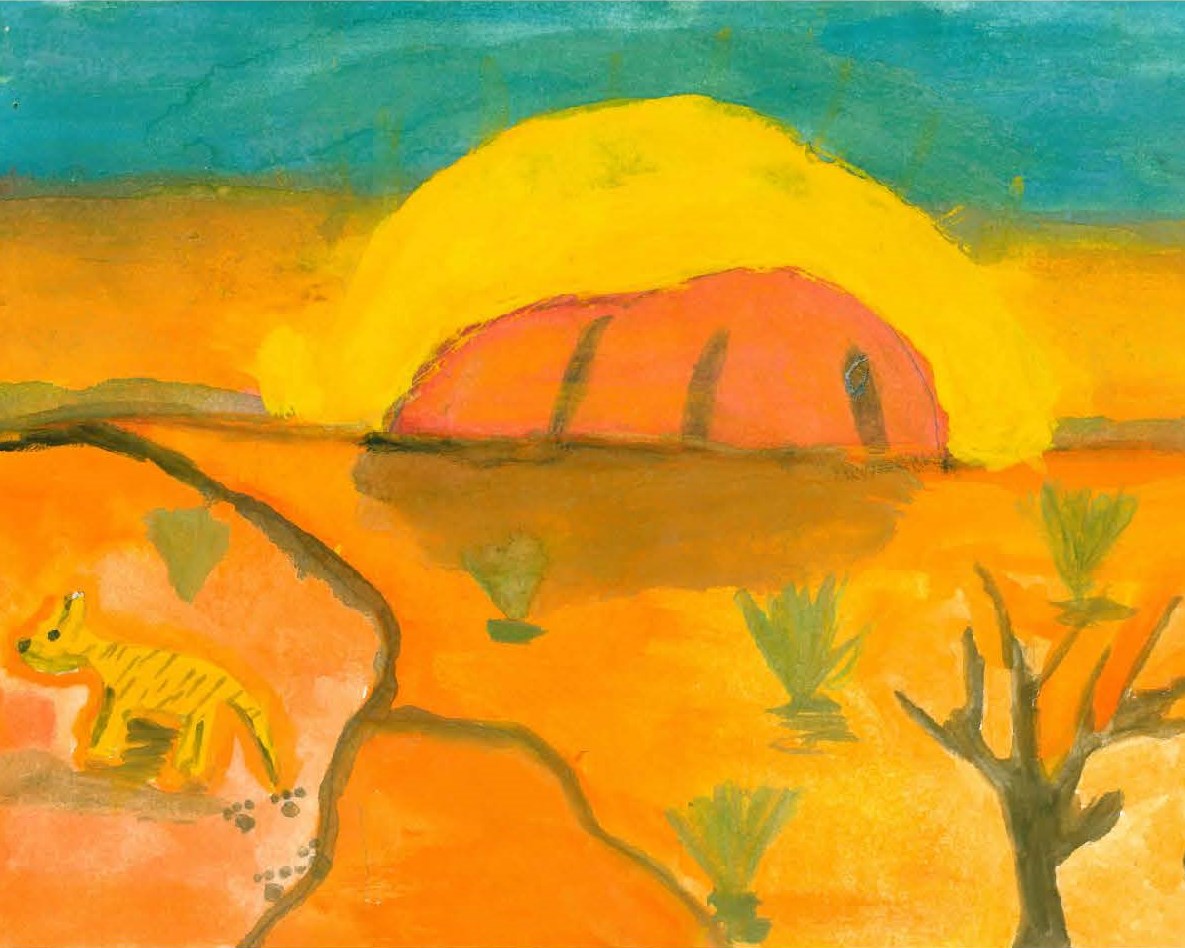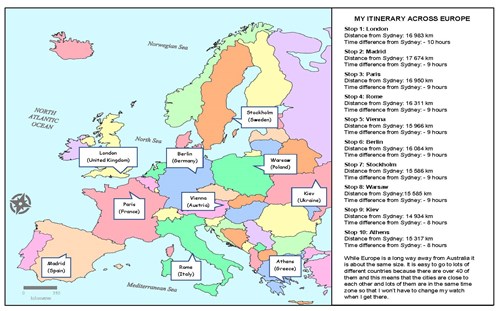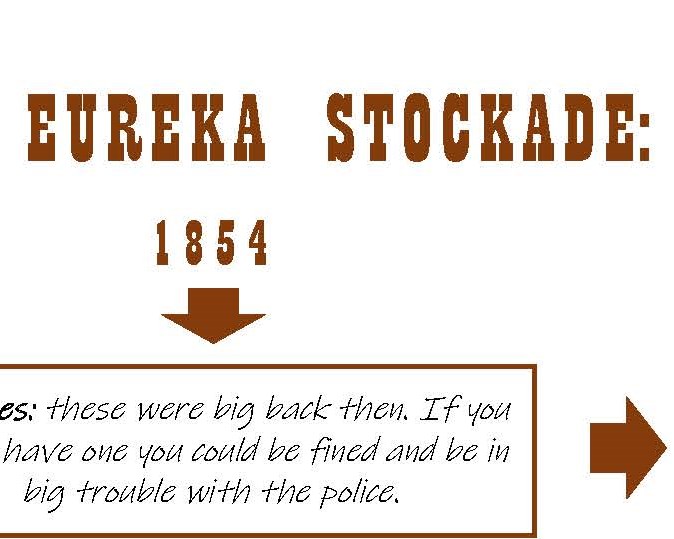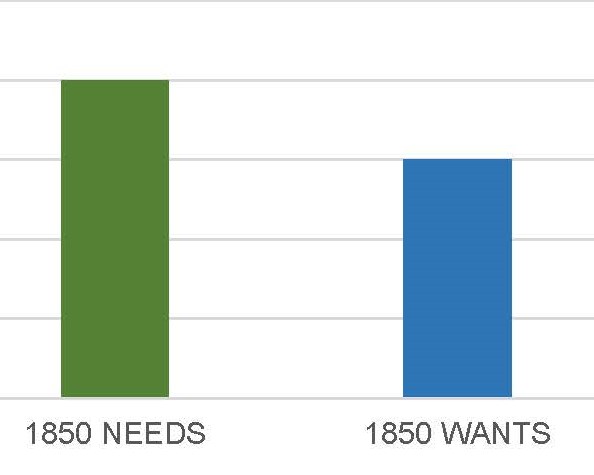Spending and saving
Summary of task
This task was part of a unit of work exploring how to make informed choices as a consumer. Students were presented with a scenario in which they were given a gift of $3000. They were required to save half of the money while being free to spend the other half on items of their choice. In both cases students were also required to justify their saving and spending choices based on their product questioning and research (on-line and in-store). Students presented their decisions to the class. The task was completed both in class and at home over a two-week period.
Achievement standard
By the end of Year 5, students distinguish between needs and wants and recognise that choices need to be made when allocating resources. They describe factors that influence their choices as consumers. Students identify individual strategies that can be used to make informed consumer and financial choices.
Students develop questions for an investigation about an economics or business issue or event. They locate and collect data and information from a range of sources to answer these questions. They examine sources to determine their purpose and suggest conclusions based on evidence. They interpret, sort and represent data in different formats. They generate alternative responses to an issue or challenge and reflect on their learning to propose action, describing the possible effects of their decision. Students apply economics and business skills to everyday problems. They present their ideas, findings and conclusions in a range of communication forms using economics and business terms.
